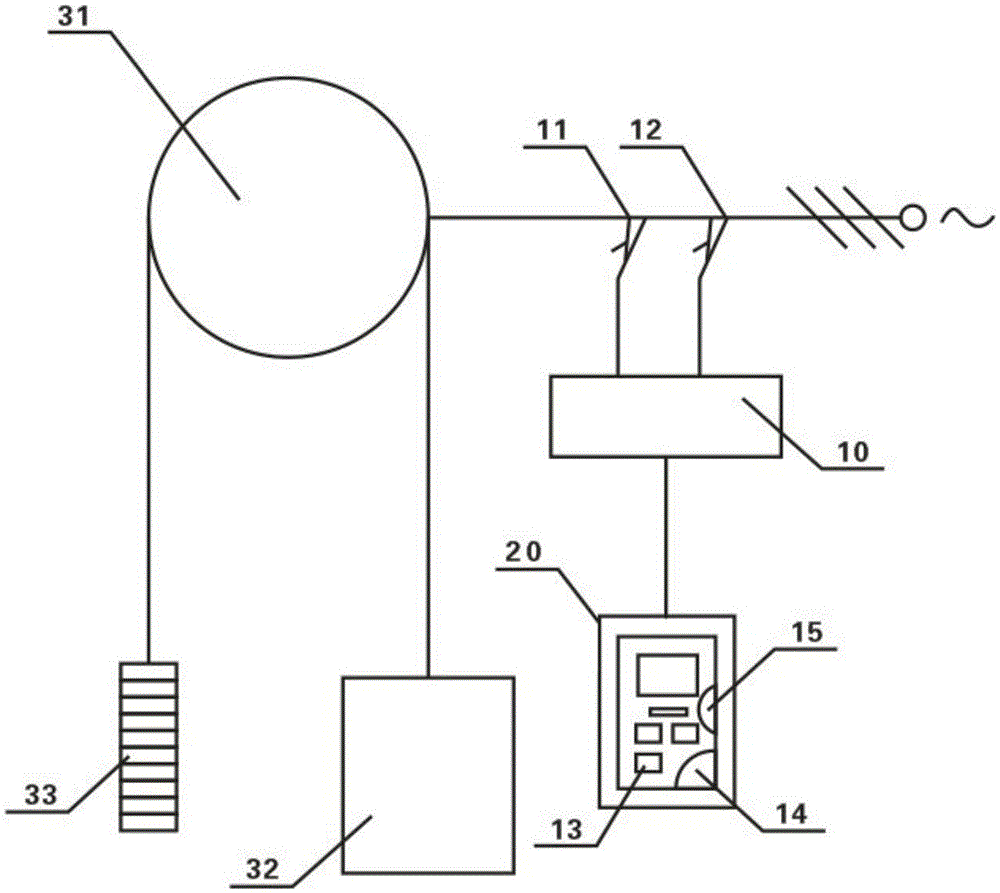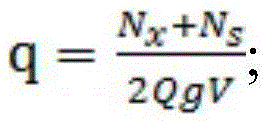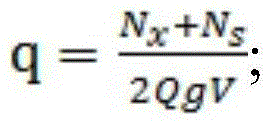Elevator balance coefficient detection device and method
A technology of balance coefficient and detection device, applied in the directions of transportation, packaging, elevators, etc., can solve the problems of cumbersome detection instruments, danger, time-consuming and labor-intensive, etc., and achieve the effect of reducing the calculation cost and making the test process convenient and quick.
- Summary
- Abstract
- Description
- Claims
- Application Information
AI Technical Summary
Problems solved by technology
Method used
Image
Examples
Embodiment Construction
[0064] Such as figure 1 Shown, a kind of elevator balance coefficient detecting device of the present invention comprises
[0065] A power detection module 10, which is connected to the power line of the elevator traction machine 31, and is used to detect the power of the elevator traction machine 31; and
[0066] The user terminal 20 is connected to the power detection module 10, and outputs the elevator balance coefficient q according to the power of the elevator traction machine through the following formula:
[0067] q = N x + N s 2 Q g V ;
[0068] in,
[0069] q is the elevator balance coefficient;
[0070] Q is the rated load;
[0071] g is the acceleration due to gravity, preferably 9.8m / s 2 ;
[0072] N X is the no-...
PUM
 Login to View More
Login to View More Abstract
Description
Claims
Application Information
 Login to View More
Login to View More - R&D
- Intellectual Property
- Life Sciences
- Materials
- Tech Scout
- Unparalleled Data Quality
- Higher Quality Content
- 60% Fewer Hallucinations
Browse by: Latest US Patents, China's latest patents, Technical Efficacy Thesaurus, Application Domain, Technology Topic, Popular Technical Reports.
© 2025 PatSnap. All rights reserved.Legal|Privacy policy|Modern Slavery Act Transparency Statement|Sitemap|About US| Contact US: help@patsnap.com



